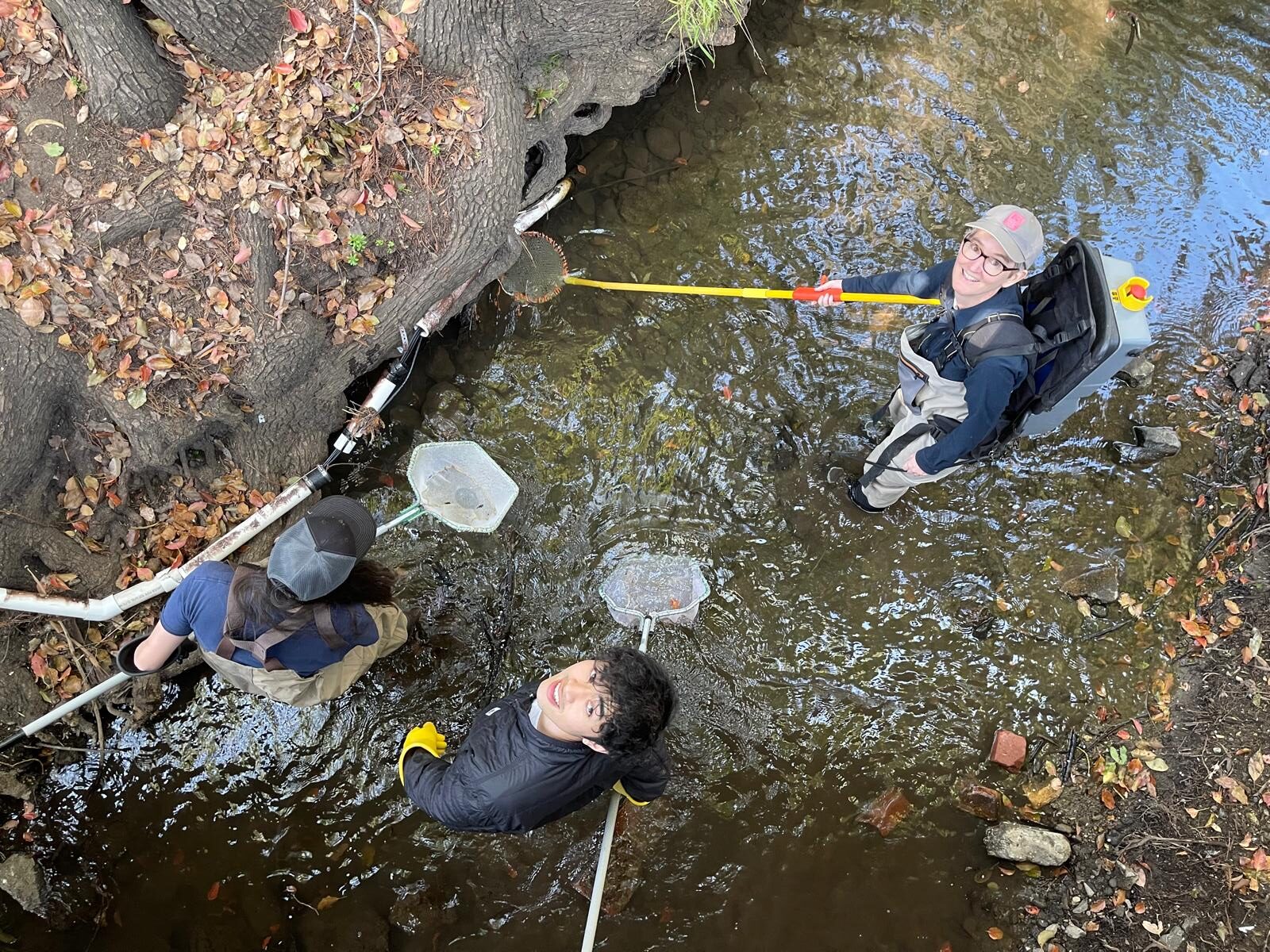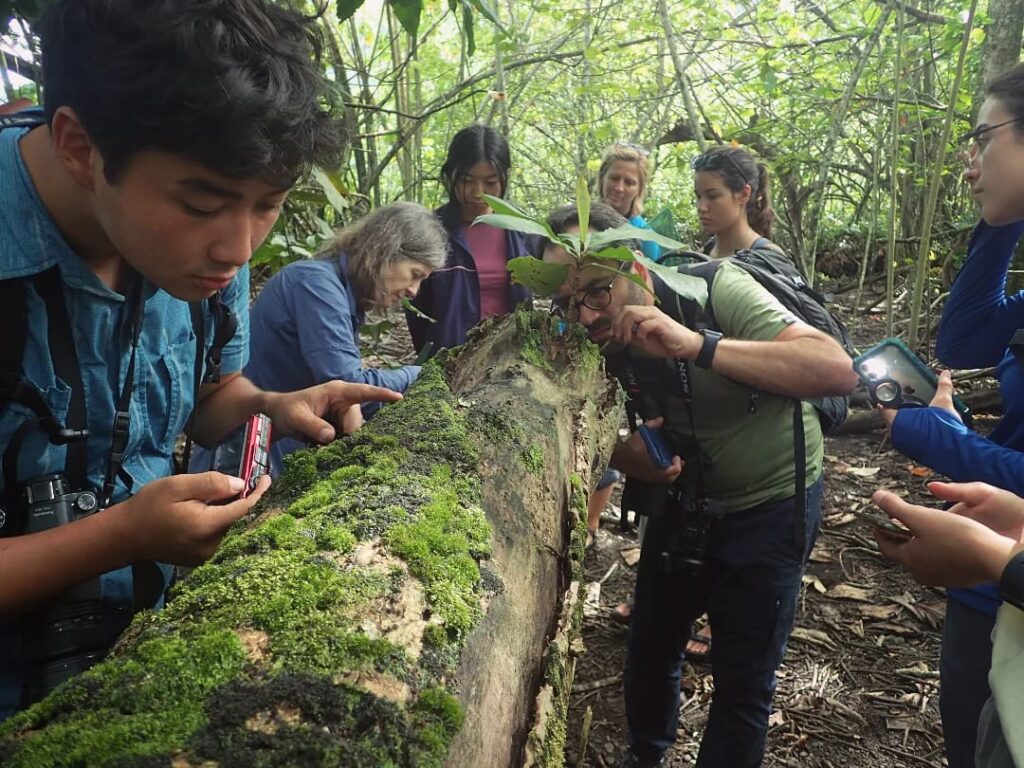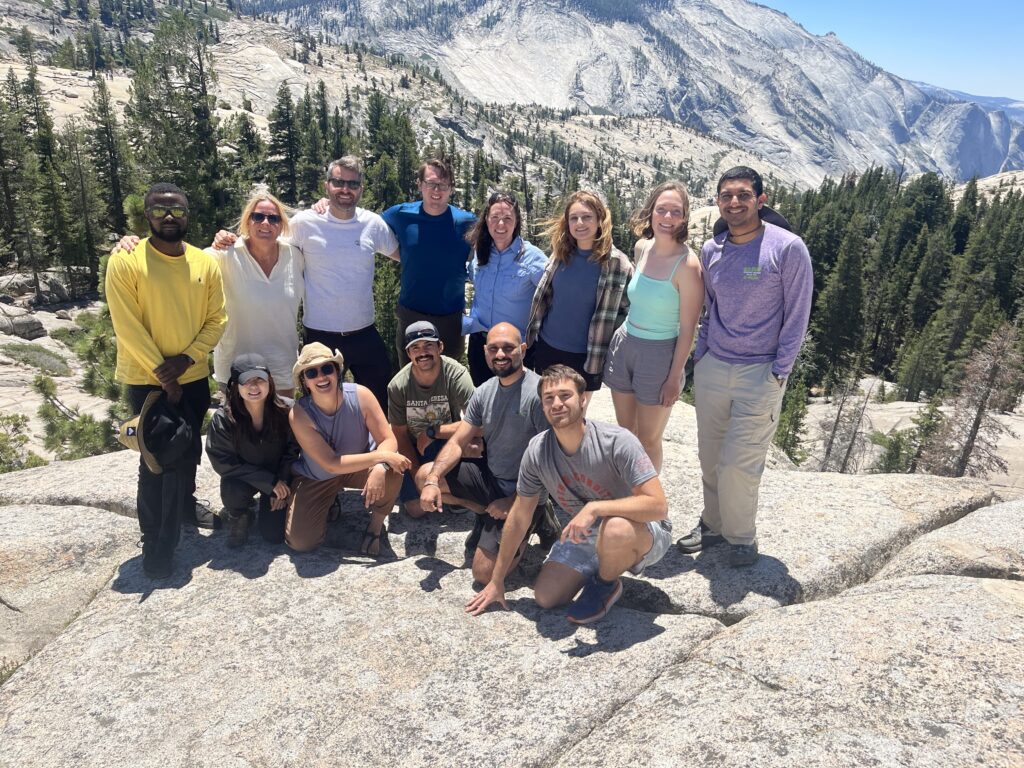Fish Ecology, Spring Semesters (ESPM 115C), 3 units [Carlson]
This course focuses on the ecology and conservation of fishes in a variety of aquatic habitats, with a focus on California, and explains the physical factors (e.g., stream flow, substrate, and salinity), biotic factors (e.g., predation and competition), and human-related factors (e.g., dams, water abstraction, logging, fishing, and colonial management systems) that affect the distribution and abundance of fishes. We learn to link general ecological principles with specific habitats, species, and conservation challenges. In doing so, we discuss strategies for conserving California’s aquatic ecosystems as well as the wildlife and people they support. This course includes three hours of work in a lab setting every week. This lab work focuses on the inland fishes of California, and introduces standard methods in fish and stream ecology, including field methods, as well data entry, visualization, and basic statistical concepts.

Freshwater Ecology (ESPM C115A / INTEGBI C171), Spring semesters, 3 units [Ruhi]
Lakes, rivers, wetlands, and estuaries are biologically rich, dynamic, and some of the most vital and vulnerable ecosystems on Earth. This course covers broad principles of organismal biology, ecology, hydrology, and ecosystem science, illustrating these principles with examples drawn from key biota and habitats from California and beyond. The first part of the course focuses on establishing key concepts in freshwater ecosystem structure and functioning. The second part delves into applied issues around conservation and management of river, wetland, and lake ecosystems. The course has 2 hours of work in a wet laboratory setting every week, which covers experimental design, deployment of sensors, sampling and identification of aquatic invertebrates, and analysis of stream community and hydrology data. The lab leads to a day-long field trip to Chalone Creek (Pinnacles National Park), where we test wet-dry mapping methods and we observe animals persisting in isolated pools.
Applied Time Series Analysis for Ecology and Environmental Sciences (ESPM 174A), Fall semesters, 3 units [Ruhi]
Research in ecology and the environmental sciences often involves measuring responses over time–whether data is generated by field observations, lab experiments, or computer simulations. Yet, analyzing time-series data is challenging because conventional statistical methods assume that observations are independent of each other. Time-series modeling tools leverage such dependencies, and provide strong inference where other methods would fail. This course teaches how to analyze time-series data using real-world examples from ecology and environmental sciences. It covers univariate and multivariate state-space models, with an incursion into statistical forecasting and analyses in the frequency domain. We draw examples from data generated by high-frequency sensors and long-term monitoring programs. The course is hands-on, will deal with practical problems (e.g., missing data, observation error). Students develop a project analyzing their own data sets, using a range of statistical packages in the R environment, over the course of a computer lab.
Biology and Geomorphology of Tropical Islands, Fall Semesters (ESPM C107 / IB 158LF), 15 units, co-taught [Carlson and Ruhi, in alternating years]

Set on the island of Mo’orea, in French Polynesia, this field course covers the biology, geomorphology, and the peopling of Polynesia, as well as emphasizes relationships between people and nature. This course teaches fundamentals of the scientific process, from the formulation of research questions and hypotheses to experimental design, data collection in the field or lab, statistical analysis, and manuscript writing. Each student carries out an independent research project selected from topics associated with Mo’orea (freshwater, marine, or terrestrial ecology). Students gain hands-on experience in field research, complete an independent research project, and present it during a research symposium at the end of the semester.
UC Water Academy, Spring Semesters, (ESPM 150/290), 1-2 units [Grantham]
California has a rich and complex historical relationship with water. The construction of large-scale water storage and distribution systems has fueled economic growth but has also transformed natural environments and contributed to the deterioration of water quality, decline of fisheries, and extinction of freshwater species. This course provides the historical, scientific, legal, and institutional background needed to understand the challenges of providing water for California’s growing population, agricultural economy, freshwater ecosystems, and other competing uses. In the spring, students from across the UC campuses meet virtually on a weekly basis to discuss relevant readings and establish foundational knowledge around the history of water management and policy in California, the state’s natural hydrologic and ecological systems, patterns of water use, and critical water management challenges. In the summer, students then embark on an intensive tour of California’s water system, visiting key water infrastructure projects and meeting with experts from different water management sectors across the state. This course has been taught intermittently since 2017.

Wildlife Seminar (Fall and Spring Semesters, shared responsibility with other members of the Wildlife Program) [Carlson]
Seminars cover a broad range of topics in applied vertebrate ecology. This is a 1 unit, pass/no pass seminar class that meets once per week (ESPM 198 / 298, 1 unit) and can be repeated.
Advanced Topics in Fisheries Science (ESPM 290, 1-2 units) [Carlson, Grantham]
Graduate discussion course on rotating topics. Recent topics have focused on the behavior and ecology of Pacific salmon and trout (Fall 2020) and on Indigenous knowledge and stewardship of aquatic systems (Fall 2022).
